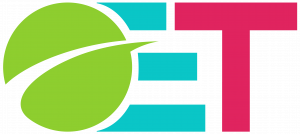In a world often divided by borders and competing interests, open source software has quietly built an alternative model of international cooperation. Unlike traditional diplomacy, this collaboration happens through shared GitHub repositories, multilingual documentation, and code reviews crossing time zones. Let’s explore why this model works and how open source has become the 21st century’s most scalable tool for bridging cultures and aligning priorities.
1. Why Open Source Unlocks Unlikely Partnerships
The mechanics of open collaboration inherently resolve barriers that stymie traditional international projects:
- Meritocracy Over Geography
A self-taught programmer in Indonesia can debug code written by a Stanford PhD—contributions are judged purely on technical merit. This flattens hierarchies and surfaces talent ignored by traditional systems. - Asynchronous Advantage
Time zones become an asset, not a hurdle. Code written in Berlin is reviewed in Tokyo, optimized in São Paulo, and deployed globally—all within 24 hours. This “follow-the-sun” development accelerates innovation cycles. - Transparency as Trust-Building
Public code reviews and open roadmaps create accountability. When the EU audited OpenSSL after the Heartbleed bug was discovered, developers worldwide could verify fixes, rebuilding confidence in critical infrastructure.
2. The example of Moodle: A Blueprint for Global EdTech Collaboration
Moodle, the world’s largest open-source learning platform, exemplifies how decentralized collaboration creates solutions greater than the sum of their parts:
- Cultural Adaptation Through Language Packs
Volunteer translators don’t just convert words—they reimagine educational experiences. For instance, the Māori language pack integrates indigenous pedagogical practices, while Arabic translations adapt to right-to-left interfaces and regional curriculum standards. This cultural sensitivity fosters trust and adoption worldwide. - 24/7 Innovation Cycles
When a Brazilian educator shares a plugin at MoodleMoot Japan, it sparks cross-continental dialogues. A gradebook tool designed for Australian vocational training might evolve into a corporate learning module in Seoul, refined by developers in Nairobi working across time zones. - Infrastructure-Inclusive Design
Collaborations between developers in high-bandwidth Europe and low-connectivity regions like rural Africa have produced offline features now benefiting all users—a reminder that diverse challenges breed universal solutions.
3. The example of Europe: Open Source as a Diplomatic Tool
Europe’s fragmented political landscape faces a stark reality: it’s difficult to compete with US tech giants by playing the same game they are. Open source offers a counter strategy:
- The Berlin Declaration (2020)
27 EU countries committed to using open source for public sector interoperability, recognizing it as critical for digital sovereignty. Shared standards prevent vendor lock-in and create a “common language” for cross-border services. - Germany’s Sovereign Tech Fund
With €22 million in 2023, this initiative funds foundational projects like OpenSSH and PHP, ensuring Europe controls its digital infrastructure. Similar efforts, like the EU’s Open Source Programme Office, aim to pool resources across nations. - From Competition to Co-Creation
Instead of 27 separate e-government systems, open source allows shared platforms. For example, France’s OpenFisca tax simulation engine is now reused in Belgium and Tunisia, reducing duplication and fostering policy alignment.
4. The Road Ahead: Scaling Collaborative Sovereignty
To maximize open source’s diplomatic potential, governments and organizations must:
- Strategic Investment
Move beyond simply creating open source software as a once-off project (e.g. Erasmus-style projects) to pooled EU-wide investments for ongoing support of projects in priority areas like Education, AI and cybersecurity. - Adopt Shared Governance Models
The Open Source Good Governance Initiative’s framework helps balance national interests with collective goals, ensuring compliance without stifling innovation. - Build Hybrid Public-Private Ecosystems
Moodle’s Partner network—spanning 100+ countries—shows how commercial entities can scale open solutions while preserving community values.
Open source isn’t just about software—it’s a social contract for strengthening data privacy and digital sovereignty. By prioritizing shared ownership over zero-sum competition, it creates a framework for reducing dependency on a single company. Successful projects such as Moodle show that open source software can be equal or better than proprietary alternatives. The model works, and we recommend that the EU redoubles their digital sovereignty efforts by supporting and building on open source.
As the EU’s digital chief recently noted: “In open source, we don’t ask where you’re from; we ask what you can contribute.” In an era of fragmentation, that ethos might be our best hope for a collaborative future.
(Note: ✨ AI tools were used to assist in the drafting of this article)

